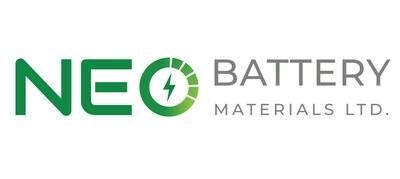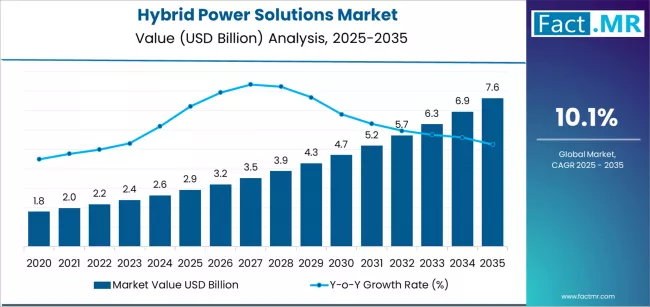New Laws Powering Maine’s Clean-Energy Future – Foley Hoag

Maine’s Legislative Overhaul of Energy Policy in Alignment with Sustainable Development Goals
The recent Maine legislative session has enacted a series of significant legal updates to its energy framework, fundamentally reshaping the state’s approach to clean energy development, market participation, and energy planning. These changes demonstrate a strong commitment to achieving key United Nations Sustainable Development Goals (SDGs), particularly SDG 7 (Affordable and Clean Energy), SDG 13 (Climate Action), SDG 9 (Industry, Innovation, and Infrastructure), and SDG 15 (Life on Land).
Elevating Energy Governance to Advance SDG 7 and SDG 13
In a major structural reform, P.L. 2025, c. 476 elevates the Governor’s Energy Office (GEO) to a new cabinet-level agency, the Maine Department of Energy Resources. This move aligns Maine with other New England states and creates a robust institutional framework (SDG 16) to drive progress on climate and energy goals. The Department is empowered to strengthen regional energy partnerships (SDG 17) and provide a long-term strategic approach to the state’s energy needs, directly supporting SDG 7 and SDG 13.
- Facilitate renewable and clean energy procurements every two years.
- Issue Requests for Proposals (RFPs) for offshore wind power projects.
- Administer the Maine Energy Resources Development Program and the Distributed Solar and Energy Storage Program.
- Coordinate with state agencies on energy-related projects and engage in rulemaking to implement statutory directives.
Advancing Clean Energy Adoption and Market Transformation
Legislative actions have recalibrated Maine’s energy procurement and incentive structures to accelerate the transition away from fossil fuels, directly contributing to SDG 7 by increasing the share of renewable energy and SDG 12 by promoting sustainable production patterns.
Strengthening Renewable Portfolio Standards for Sustainable Production (SDG 7, SDG 12)
P.L. 2025, ch. 386 significantly revises the state’s policy targets for retail electricity sales, establishing a more ambitious timeline for decarbonization.
- The law mandates that by 2040, 90% of retail electricity must originate from renewable sources, with the remaining 10% from “clean resources.”
- It introduces a new “Class III” resource category, which includes Class I/IA resources, nuclear power, certain hydroelectric generators, and other generation with de minimis greenhouse gas emissions. This diversification supports a reliable and clean energy mix (SDG 7).
- The law strengthens portfolio requirements for Class IA resources beginning in 2031 and establishes tradable clean energy credits to satisfy portfolio requirements, fostering a market-based approach to achieving clean energy targets.
Phasing Out Net Energy Billing to Foster New Distributed Energy Models (SDG 7, SDG 9)
P.L. 2025, ch. 430 overhauls the state’s Net Energy Billing (NEB) program, signaling a strategic shift in how distributed energy resources are incentivized. This reform aims to create a more sustainable and equitable successor program, fostering innovation in energy infrastructure (SDG 9).
- A cut-off date of December 31, 2025, is established for new entrants into NEB programs.
- NEB compensation is reduced for existing commercial and industrial participants, and a monthly fee will be implemented for certain participants starting in 2026.
- The GEO is directed to design a successor program to encourage the development of “front of the meter distributed energy resources,” promoting a modern, resilient grid (SDG 7, SDG 9).
Strategic Initiatives for Sustainable Infrastructure and Land Use
New laws direct state agencies to pursue energy development that is not only clean but also considers environmental and land-use impacts, reflecting a commitment to SDG 9 (Infrastructure) and SDG 15 (Life on Land).
Prioritizing Sustainable Siting in Energy Procurements (SDG 15, SDG 7)
P.L. 2025, ch. 392, enacted as emergency legislation, directs the Maine Public Utilities Commission (MPUC) to issue an RFP for energy or Renewable Energy Credits (RECs) from Class 1A resources. This procurement explicitly integrates land-use considerations, advancing SDG 15 by protecting vital ecosystems.
- The RFP gives preference to generation projects located on PFAS-contaminated lands.
- It also prioritizes projects that minimize the use of uncontaminated farmland or forested lands.
- This is complemented by Resolves 2025, ch. 51, which authorizes a regulatory framework for compensating for the impacts of solar development on high-value agricultural land.
Planning for Future Infrastructure and Innovation (SDG 9, SDG 11)
Several resolves direct state agencies to investigate and plan for next-generation energy infrastructure, crucial for building sustainable communities (SDG 11) and fostering innovation (SDG 9).
- Resolves 2025, ch. 57: Directs the GEO to conduct a study on the future of electric transmission infrastructure in Maine.
- Resolves 2025, ch. 67: Directs the GEO to issue a Request for Information (RFI) regarding the creation of a thermal energy networks program, focusing on low-emission heating and cooling for multiple buildings using geothermal or recovered thermal energy.
Enhancing Regulatory Frameworks and Consumer Protection
Additional updates focus on the regulatory and financial mechanics of the energy transition, ensuring that the move to clean energy remains affordable and that consumers are protected, in line with the principles of SDG 7 (Affordable Energy) and SDG 16 (Strong Institutions).
Key Regulatory and Financial Adjustments
- P.L. 2025, ch. 430: Directs the MPUC to implement a new rate design for the recovery of stranded costs by October 1, 2025, addressing a key financial aspect of the energy transition.
- P.L. 2025, ch. 123: Grants the Office of the Public Advocate (OPA) expanded authority to access information from utilities and providers to enhance its mission of ratepayer protection.
Analysis of SDGs, Targets, and Indicators in the Article
1. Which SDGs are addressed or connected to the issues highlighted in the article?
SDG 7: Affordable and Clean Energy
The article is fundamentally about Maine’s transition to clean energy. It discusses new laws overhauling renewable portfolio standards, creating a clean energy standard, developing solar and offshore wind power, and establishing programs for distributed energy resources. The mention of “ratepayer protection” and managing “stranded costs” also connects to the affordability aspect of this goal.
SDG 9: Industry, Innovation, and Infrastructure
The text highlights significant upgrades and development of energy infrastructure. This includes directing the GEO to conduct a study on “the future of electric transmission infrastructure,” creating a successor program for “front of the meter distributed energy resources,” and procuring transmission capacity. These actions are aimed at building resilient and sustainable infrastructure to support a modern, clean energy industry.
SDG 13: Climate Action
The article directly addresses climate action by detailing policies aimed at reducing reliance on fossil fuels. The law requiring that electricity generation produces “no more than de minimis greenhouse gas emissions” and the overall push for renewable sources like solar and wind are core strategies for climate change mitigation, which is central to SDG 13.
SDG 16: Peace, Justice, and Strong Institutions
The establishment of a new cabinet-level “Maine Department of Energy Resources” is a clear example of building effective and accountable institutions. This new department is tasked with statewide energy planning, administering clean energy procurements, and coordinating climate efforts, thereby strengthening the state’s governance framework for energy and climate issues.
SDG 17: Partnerships for the Goals
The article mentions the importance of collaboration. It notes that the new Department of Energy Resources will strengthen “regional and national energy partnerships.” Furthermore, it gives the MPUC authority to “coordinate with one or more states to procure transmission capacity, capacity resources, renewable energy credits, or clean energy credits,” directly reflecting the partnership-focused approach of SDG 17.
2. What specific targets under those SDGs can be identified based on the article’s content?
SDG 7: Affordable and Clean Energy
- Target 7.2: By 2030, increase substantially the share of renewable energy in the global energy mix. The article explicitly details a new state policy target: “by 2040, 90 percent of retail electricity must come from renewable sources and 10% will come from ‘clean resources.'”
- Target 7.a: By 2030, enhance international cooperation to facilitate access to clean energy research and technology… and promote investment in energy infrastructure and clean energy technology. The article describes plans to “facilitate renewable and clean energy procurements,” issue “offshore wind power project RFPs,” and study “electric transmission infrastructure,” all of which align with promoting investment in clean energy infrastructure and technology.
SDG 9: Industry, Innovation, and Infrastructure
- Target 9.1: Develop quality, reliable, sustainable and resilient infrastructure… to support economic development and human well-being. The directive for the GEO to “conduct a study regarding the future of electric transmission infrastructure in the state” is a direct effort to plan for resilient and sustainable infrastructure.
- Target 9.4: By 2030, upgrade infrastructure and retrofit industries to make them sustainable, with increased resource-use efficiency and greater adoption of clean and environmentally sound technologies. The entire article focuses on this, particularly through the revision of the state’s renewable portfolio standards (RPS) and the creation of a new “Clean Energy Standard.”
SDG 13: Climate Action
- Target 13.2: Integrate climate change measures into national policies, strategies and planning. The slate of new laws (P.L. 2025, ch. 430, P.L. 2025, ch. 386, etc.) and the creation of a dedicated Department of Energy Resources represent the integration of climate and clean energy goals into state-level policy and institutional planning.
SDG 16: Peace, Justice, and Strong Institutions
- Target 16.6: Develop effective, accountable and transparent institutions at all levels. The law that “elevates the GEO to a new cabinet-level agency, the Maine Department of Energy Resources” is a direct implementation of this target, creating a more robust and accountable institution for energy governance.
SDG 17: Partnerships for the Goals
- Target 17.17: Encourage and promote effective public, public-private and civil society partnerships. The article highlights this by noting the MPUC’s new authority to “coordinate with one or more states” and the Governor’s goal to “strengthen regional and national energy partnerships.”
3. Are there any indicators mentioned or implied in the article that can be used to measure progress towards the identified targets?
SDG 7: Affordable and Clean Energy
- Indicator for Target 7.2: The percentage share of renewable and clean energy in retail electricity sales. The article provides a precise metric: “by 2040, 90 percent of retail electricity must come from renewable sources and 10% will come from ‘clean resources.'”
SDG 9: Industry, Innovation, and Infrastructure
- Indicator for Target 9.4: The creation and use of new financial and regulatory instruments. The article mentions the creation of “clean energy credits, representing generation associated with Class III resources, that are tradeable and similar in nature to renewable energy credits.” The volume of these credits traded would be a measurable indicator.
SDG 13: Climate Action
- Indicator for Target 13.2: The number of laws and regulations adopted to support climate goals. The article lists several specific laws (P.L. 2025, ch. 430, P.L. 2025, ch. 386, P.L. 2025, c. 476) that serve as tangible indicators of policy integration.
SDG 16: Peace, Justice, and Strong Institutions
- Indicator for Target 16.6: The establishment of new government bodies with specific mandates. The formal launch of the “Maine Department of Energy Resources” is a direct, observable indicator of progress in building stronger institutions.
SDG 17: Partnerships for the Goals
- Indicator for Target 17.17: The number of inter-state or regional agreements. The authority for the MPUC to “coordinate with one or more states to procure transmission capacity, renewable energy credits, or clean energy credits” implies that the resulting agreements would serve as an indicator of partnership.
4. Summary Table of Findings
| SDGs | Targets | Indicators |
|---|---|---|
| SDG 7: Affordable and Clean Energy | 7.2: Increase substantially the share of renewable energy in the global energy mix. | The specific policy goal that “by 2040, 90 percent of retail electricity must come from renewable sources.” |
| SDG 9: Industry, Innovation, and Infrastructure | 9.4: Upgrade infrastructure and retrofit industries to make them sustainable… with greater adoption of clean and environmentally sound technologies. | The establishment of a “Clean Energy Standard” and the creation of tradable “clean energy credits.” |
| SDG 13: Climate Action | 13.2: Integrate climate change measures into national policies, strategies and planning. | The enactment of new energy laws (P.L. 2025, ch. 386, etc.) designed to reduce greenhouse gas emissions from the electricity sector. |
| SDG 16: Peace, Justice, and Strong Institutions | 16.6: Develop effective, accountable and transparent institutions at all levels. | The elevation of the Governor’s Energy Office (GEO) to a new cabinet-level “Maine Department of Energy Resources.” |
| SDG 17: Partnerships for the Goals | 17.17: Encourage and promote effective public, public-private and civil society partnerships. | The new authority for the MPUC to “coordinate with one or more states” and the stated goal to strengthen “regional and national energy partnerships.” |
Source: foleyhoag.com

What is Your Reaction?
 Like
0
Like
0
 Dislike
0
Dislike
0
 Love
0
Love
0
 Funny
0
Funny
0
 Angry
0
Angry
0
 Sad
0
Sad
0
 Wow
0
Wow
0












































































